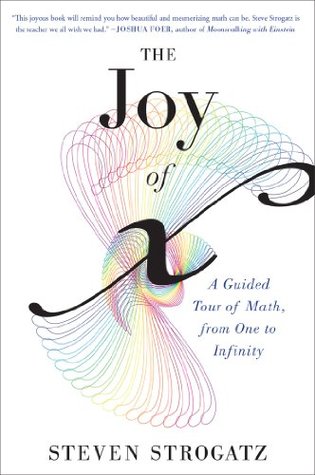More on this book
Community
Kindle Notes & Highlights
Read between
April 29 - June 2, 2025
math always involves both invention and discovery: we invent the concepts but discover their consequences.
in mathematics our freedom lies in the questions we ask—and in how we pursue them—but not in the answers awaiting us.
Maybe we’re wired to doubt the commutative law because in daily life, it usually matters what you do first.
The silver lining is that even wrong answers can be educational . . . as long as you realize they’re wrong.
as x gets larger and larger, an exponential function of x eventually grows faster than any power function, no matter how large the power.
Notice something magical here: as the numbers inside the logarithms grew multiplicatively, increasing tenfold each time from 100 to 1,000 to 10,000, their logarithms grew additively, increasing from 2 to 3 to 4. Our brains perform a similar trick when we listen to music. The frequencies of the notes in a scale—do, re, mi, fa, sol, la, ti, do—sound to us like they’re rising in equal steps. But objectively their vibrational frequencies are rising by equal multiples. We perceive pitch logarithmically.
A parabola is commonly defined as the set of all points equidistant from a given point and a given line not containing that point.
An ellipse is defined as the set of points the sum of whose distances from two given points is a constant.
In fact, circles, ellipses, and parabolas are all members of a larger, tight-knit family. They’re collectively known as conic sections—curves obtained by cutting the surface of a cone with a plane.
Whenever a state of featureless equilibrium loses stability—for whatever reason, and by whatever physical, biological, or chemical process—the pattern that appears first is a sine wave, or a combination of them.
Calculus is the mathematics of change.
Derivatives are all around us, even if we don’t recognize them as such. For example, the slope of a ramp is a derivative. Like all derivatives, it measures a rate of change—in this case, how far you’re going up or down for every step you take. A steep ramp has a large derivative. A wheelchair-accessible ramp, with its gentle gradient, has a small derivative.
e equals the limiting number approached by the sum 1 + 1/1 + 1/1×2 + 1/1×2×3 + 1/1×2×3×4 + ∙ ∙ ∙.
what distinguishes calculus from the earlier parts of math is its willingness to confront—and harness—the awesome power of infinity.
the business of theoretical physics boils down to finding the right differential equations and solving them.
one of the central lessons of statistics—things that seem hopelessly random and unpredictable when viewed in isolation often turn out to be lawful and predictable when viewed in aggregate.
The normal distribution can be proven to arise whenever a large number of mildly random effects of similar size, all acting independently, are added together.
In topology, two shapes are regarded as the same if you can bend, twist, stretch, or otherwise deform one into the other continuously—that is, without any ripping or puncturing.


